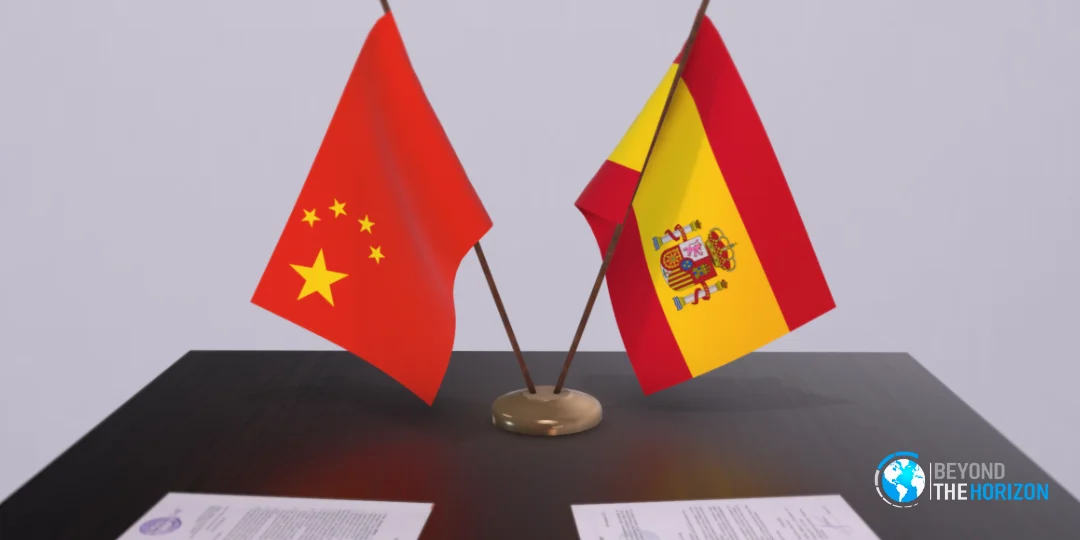China-Spain Economic Relations
An Asymmetric Boom Since 2000
An Overview of a Transformed Partnership
Since the establishment of their "Comprehensive Strategic Partnership" in 2005, the economic ties between China and Spain haveundergone a profound transformation. What was a modest connection in 2000 has exploded into a multi-billion dollar relationship. This growth, however, has been fundamentally asymmetric.
Today, China stands as one of Spain's largest trading partners, driven by a massive flow of Chinese exports. This has created a significant and persistent trade deficit for Spain, a key challenge that recent high-level diplomacy, including the 2025 royal visit, aims to address. On the investment front, the story is similar: the 2010s saw a dramatic surge of Chinese capital into Spain, while Spanish investment in China remains minimal. This infographic explores the data behind this rapid, complex, and strategically vital relationship.
Recent Developments: A Royal Visit (Nov 2025)
In November 2025, King Felipe VI made the first Spanish state visit to China in 18 years. The visit, marking the 20th anniversary of the strategic partnership, had a strong economic focus aimed at strengthening ties and addressing the trade imbalance.
Addressing the Trade Gap
The visit highlighted the ongoing asymmetry. Recent 2024 data from Spain's ICEX agency, cited during the visit, showed Spain imported €45 billion from China while exporting only €7.5 billion. This reinforces the 2023 data shown below and underscores Spain's push for "equal terms" for its companies.
Securing Future Investment
A key goal was attracting Chinese investment, building on the post-2010 boom. Business forums aimed to spur further FDI from Chinese giants like CATL, Envision, and Chery, who are already planning major projects in Spain's EV battery and green energy sectors.
Strategic Balancing Act
The visit signals Spain's broader strategy. As the EU's stance on China hardens and relations with the U.S. prove uncertain, Madrid is reinforcing its role as one of Beijing's most engaged European partners, balancing economic opportunities with geopolitical alignments.
Key Milestones
From a minor connection in 2000, the economic relationship between China and Spain has transformed into a major, albeit structurally imbalanced, partnership.
2005: Strategic Partnership
Spain and China establish a "Comprehensive Strategic Partnership," creating the political foundation for deeper economic cooperation.
2008-2010: Financial Crisis
During Spain's severe financial crisis, China became a key international creditor, purchasing significant amounts of Spanish debt—reportedly holding 12% of all Spanish debt in foreign hands at the time.
Present: Asymmetric Relationship
Today, China is one of Spain's largest trading partners (primarily as a source of imports), while Spain's role for China is much smaller, resulting in a persistent and large trade deficit for Spain.
The Bilateral Trade Explosion
Total trade volume between the two nations has grown exponentially since 2000, illustrating a rapid increase in economic integration. The charts below reflect 2023 data.
Total Trade Volume Growth (USD)
Bilateral trade surged from just $7.2B in 2004 to over $55B by 2023.
2023 Trade Imbalance: $55.65B Total (USD)
The relationship is dominated by Chinese exports to Spain, creating a massive trade deficit for Spain.
The Great Imbalance: What We Trade (2023 Data)
The trade deficit isn't just large; it's a defining feature of the relationship. In 2017, trade with China accounted for 73% of Spain's entire global trade deficit. The goods traded clearly show this imbalance.
Top Chinese Exports to Spain (2023)
China exports high-value manufactured goods, including vehicles and electronics.
Top Spanish Exports to China (2023)
Spain's exports are smaller in value and concentrated in specific sectors like pharmaceuticals and agriculture.
Spain's Deficit Share (2017)
In 2017, the trade deficit with China ($24.1B) made up 73% of Spain's total global trade deficit ($33.0B), highlighting the imbalance.
The Flow of Capital: Investment
Similar to trade, the investment relationship is highly asymmetric. The 2010s saw a dramatic surge of Chinese investment into Spain, while Spanish investment in China remains minimal.
Chinese FDI Stock in Spain
Chinese investment stock in Spain exploded from almost nothing in 2010 to over €10 billion by 2018.
Spanish FDI in China
Conversely, Spanish investment in China is extremely low.
Rank of China as a destination for Spanish foreign investment.
Of total Spanish outbound investment goes to China.

